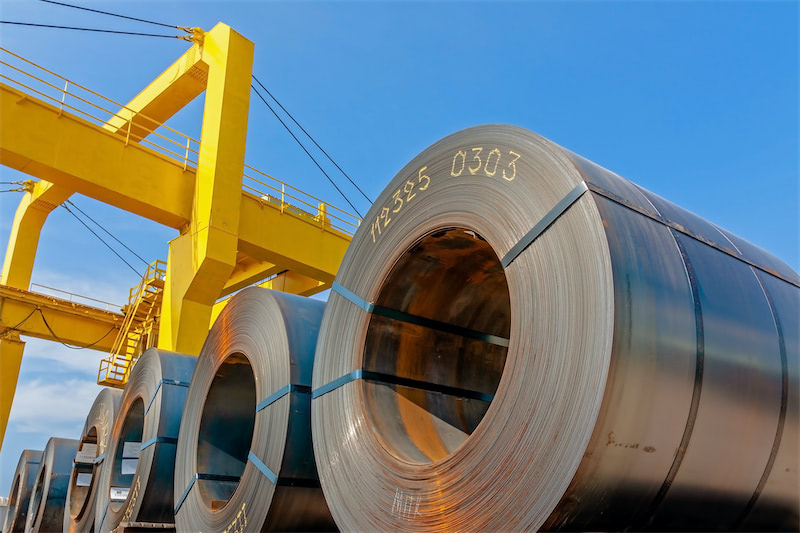






According to the latest survey data from SMM, the magnesium market this week has witnessed the following international developments and changes in trade flows:
Latrobe Magnesium Secures Environmental Approval Extension, Accelerates Demonstration Plant Launch and Land Asset Disposal
Recently, there have been new developments in magnesium production at Australia's Latrobe Magnesium Limited (ASX: LMG):
LMG announced that its pilot project in Hazelwood North has been granted an extension of its approval from the Environmental Protection Authority Victoria (EPA Victoria) until February 2027. The company plans to commence demonstration plant operations in August 2025, aiming to achieve stable production of magnesium oxide and by-products. Meanwhile, LMG is disposing of idle land, expecting to generate AUD 5 million in proceeds, and has filed a AUD 19.39 million counterclaim for breach of contract against contractor Mincore. Additionally, the company is advancing feasibility studies and site selection assessments for Phase II and III plants, and has already secured funding support. Notably, LMG's collaboration with the US Department of Defense indicates a strategic shift towards exporting magnesium products to the US, including meeting procurement needs of the Pentagon.
The approval extension and demonstration plant launch demonstrate the commercial potential of LMG's patented process, but whether its technology can be translated into production and whether it can align with the actual progress of exports to the US remain to be seen. The current market capitalization of AUD 39.48 million and the "sell" signal also reflect the market's cautious attitude towards LMG's high-debt expansion model.
US GAO Report Focuses on Extracting Critical Minerals from Desalination Waste, Paving New Path for Localized Magnesium Production
The US Government Accountability Office (GAO) recently released a report indicating that progress has been made in extracting critical minerals (such as magnesium and lithium) from waste brine generated by desalination, which is expected to reduce the US's reliance on imported resources. Currently, institutions like Oregon State University are conducting a two-year pilot project to verify the scalability and economic feasibility of the technology. The report emphasizes that despite the low mineral concentration in seawater, the vast amount of brine waste generated annually by global desalination facilities could serve as a potential resource pool. However, the technology still faces challenges: there are only a dozen or so desalination plants nationwide, inadequate infrastructure for mineral purification, and doubts about legal compliance costs and economic viability. The GAO recommends that policymakers assess how this technology can be integrated into the national critical mineral supply chain strategy.
The current gap between laboratory research and industrialization in US magnesium production still requires collaborative efforts from the government, academia, and industry.
South Korea's Biodegradable Magnesium Alloy Market Experiences Explosive Growth, with Medical and New Energy Sectors as Major Drivers
South Korea's biodegradable magnesium alloy market is entering a rapid growth phase, with medical implants and new energy vehicles (NEVs) serving as the main growth engines. Latest data show the market size is projected to reach $230 million in 2025, with a CAGR of 12.7%. Medical applications account for over 45%, primarily for orthopedic and cardiovascular implants, while the automotive sector leads with 18.2% growth—Hyundai has adopted magnesium alloy battery frames in new EVs achieving 15% weight reduction. Government support continues to intensify, with related R&D investment growing 23% in 2023, and institutions like Seoul National University collaborating with enterprises to establish specialized innovation centers. However, the industry still faces technical bottlenecks such as reliance on imported raw materials and degradation rate control.
South Korea's breakthroughs in biodegradable magnesium alloys demonstrate the immense potential of material innovation, but achieving full autonomy still requires sustained investment in raw material supply chains and core technologies. This "medical + industrial" dual-drive development model may provide valuable references for other countries' new material industries.
Magnesium Ingot Inventory Continues to Decline as Active Japan and South Korea Procurement Supports Firm Prices
SMM survey data indicate domestic social inventory of magnesium ingots fell 2.61% WoW this week, with market supply tightening further. Meanwhile, procurement demand from Japan and South Korea remained active, keeping mainstream FOB transaction prices in the $2,340-2,360/mt range. This procurement surge stems from three factors: (1) rapid earlier price hikes led to strong wait-and-see sentiment downstream, with some orders delayed and recently concentrated; (2) August coincides with the traditional summer break in Japan and South Korea, prompting enterprises to stockpile raw materials before holidays; (3) as local manufacturing continues recovering, the industry chain has entered an active restocking cycle.
Against the backdrop of gradual global manufacturing recovery, Asian magnesium ingot demand remains resilient, with short-term prices likely to hover at highs. However, risks like overseas economic downturns and potential market volatility from new domestic and overseas capacity releases still warrant caution.
For queries, please contact Lemon Zhao at lemonzhao@smm.cn
For more information on how to access our research reports, please email service.en@smm.cn

